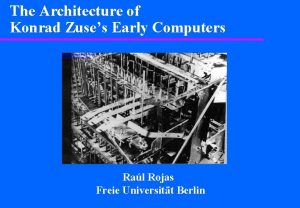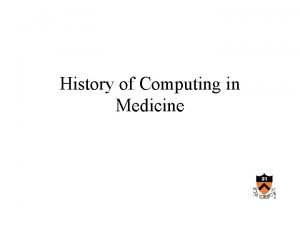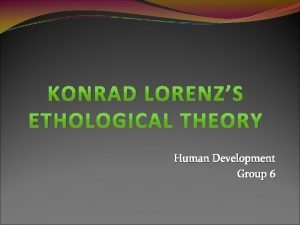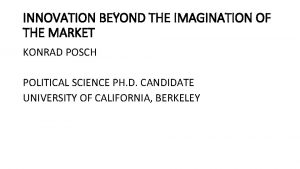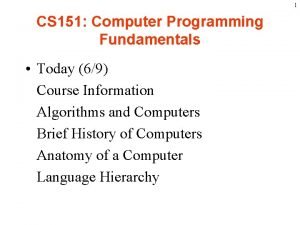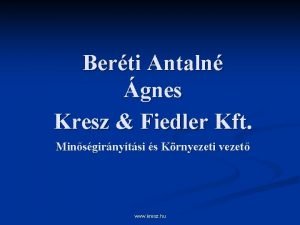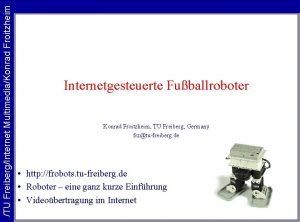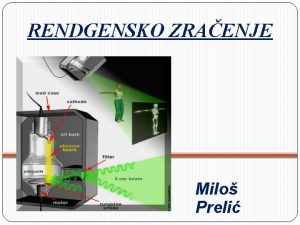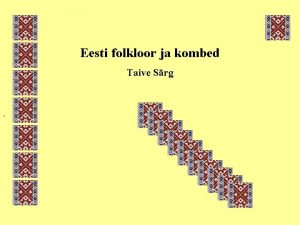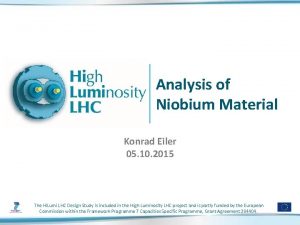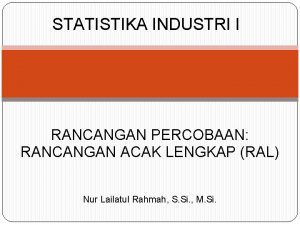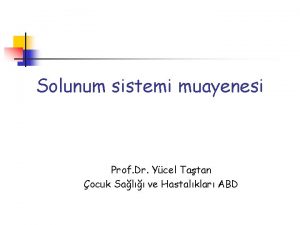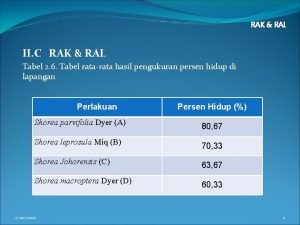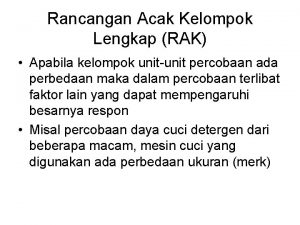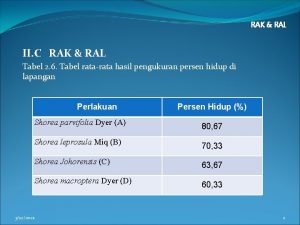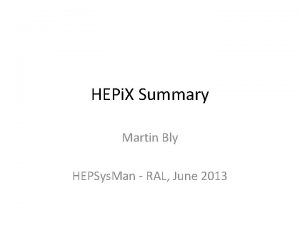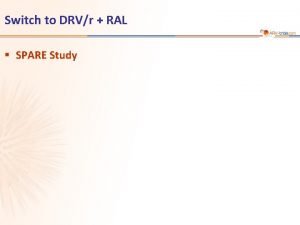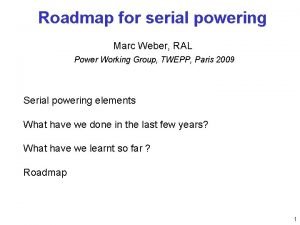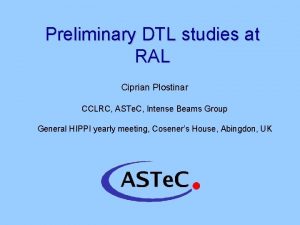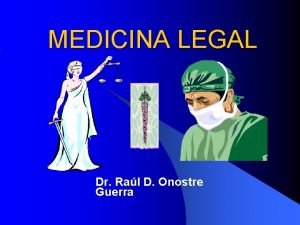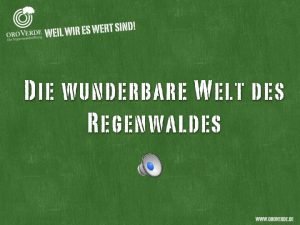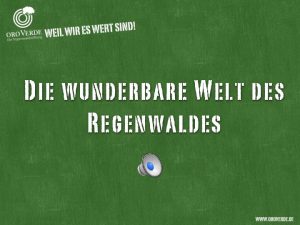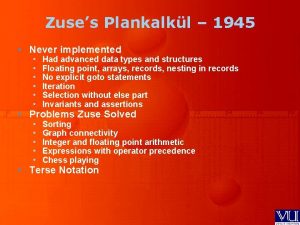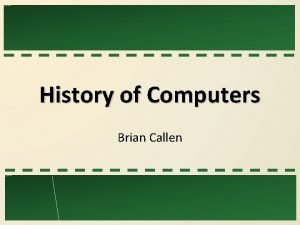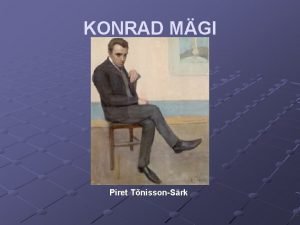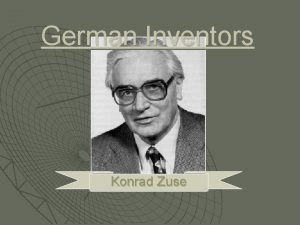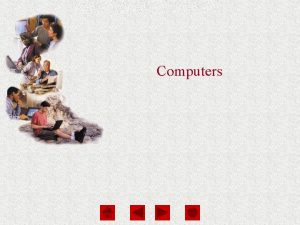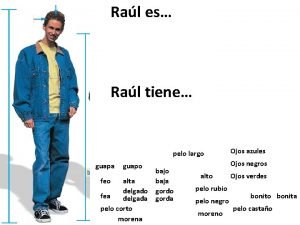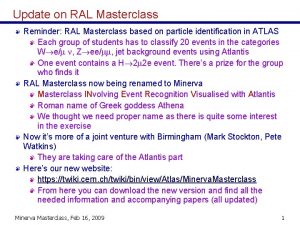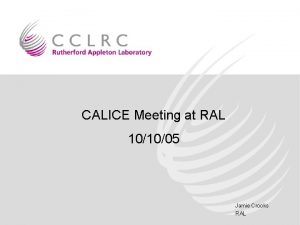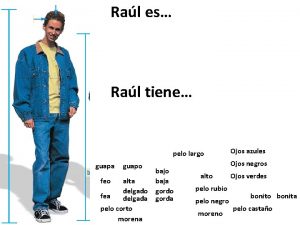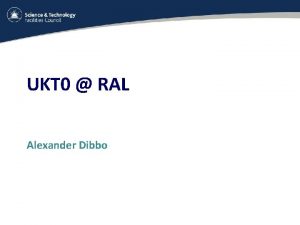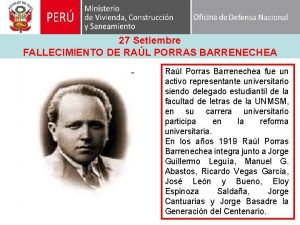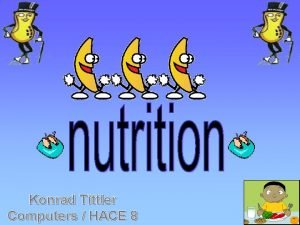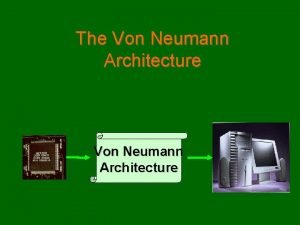The Architecture of Konrad Zuses Early Computers Ral














































- Slides: 46

The Architecture of Konrad Zuse’s Early Computers Raúl Rojas Freie Universität Berlin

Konrad Zuse (1910 -1995)

Topics • Overview • Arithmetic in the Z 1 and Z 3 • The processor • The datapath • Highlights • Were the Z 1 and Z 3 universal?

The chronology • Z 1 • Z 2 • Z 3 • S 1 1“ • S 2 2“ • Z 4 1936 -38 1939 1940 -41 1942 - „Sondermaschine 1944 - „Sondermaschine 1942 -45

The Z 1 and Z 3 Z 1 (1936 -1938) - mechanical design - programmable (punched tape) - basic arithmetic operations - completely binary - floating-point machine Z 3 (1938 -1941) - built with relays - logically equivalent to the Z 1

The original Z 1 (Berlin 1938)

A mechanical computing machine. . .

The Z 3 (1941): built out of relays Memory Processor

Light and shadow. . .

The punched tape reader

The block architecture control unit punched tape Numeric keyboard Numeric display FP processor Binary memory 64 words exponent mantissa

Decimal input = + 13542 decimal mantissa decimal exponent -8 -7 -6 0 6 7 1 + _ sign 8 10 7 0 0 1 1 2 2 3 3 4 4 5 5 6 6 7 7 8 8 9 9

Floating-Point Coding • In the Z 1 and Z 3 1 bit +, - 6 bit exponent 14 bit mantissa • IEEE Standard 1 bit +, - 7 bit exponent 24 bit mantissa

Normalized floating-point and rounding exponent 1 bit 0 + 6 bit 111111 mantissa 14 bit 01010101 1. 0101010100 copyleading to register onein processor two extra rounding digits

Numerical exceptions zero Special coding for : + infinite (lowest exponent) (highest exponent) - infinite The machine stops at : 0/0 0 * infinite - infinite

The instruction set - Arithmetic mnemonic • Addition • Subtraction 101000 • Multiplication • Division • Square root 011000 8 -bit code Ls 1 01 100000 Ls 2 01 Lm Li 01 001000 01 010000 Lw 01

The instruction set - data handling mnemonic 8 -bit code • Load • Store Pr Ps 11 ----10 ----- • Binary to decimal Ld 01 Lu 01 111000 • Decimal to binary 110000

Structure of the processor Register 1 R 1 R 2 Register 2 exponent Adders ( +, - ) mantissa

A simple program Lu Lu Ls 1 Ps 10 Lu Pr 10 Lm Ld (a+b)*c read decimal number to Register 1 read decimal number to Register 2 add store result in address 10 read decimal number to Register 1 read from address 10 to Register 2 multiply show the decimal result

The microsequencers conducting rod: advances one position per cycle step 1 step 2 step 3 step 4 step 5

Pipelining Instruction store next instruction Store operations run in “zero” cycles

Carry look-ahead • Addition was performed in three steps: • compute sum (XOR) • compute all propagated carries • produce final result • With relays addition can be performed in constant time (not logarithmic time)

Shifting • Shifting can be done using a shifting tree (in logarithmic time) • With relays shifting can be done in constant time

Java simulation of the Z 3

The mechanical relays

A mechanical relay ( B = A AND C ) control bit C bit A =0 =0 =1 bit B =0 =0

A mechanical relay ( B = A and C ) control bit C bit A =0 bit B =0 =1 =0

A mechanical relay ( B = A and C ) control bit C bit A =1 =0 =1 bit B =0 =1

A two-bit multiplexer bit A bit B bit C = A

A two-bit multiplexer bit A bit B bit C

A two-bit multiplexer bit A bit B bit C = B

The mechanical memory prepare operation Zero

The mechanical memory prepare operation move to “ 1”

The mechanical memory move to “ 1” store 1

The Z 4 in Zurich

Question: Were the Z 1 and Z 3 universal? YES

A single arithmetical loop is universal we only need 6 instructions: LOAD STORE + - * /

Arithmetical operations Compiled code a = b op c LOAD b LOAD c op STORE a

Simulating branching “execute section 3 = 011” section 1 0 0 1 section 2 0 1 0 section 3 0 1 1

Transform all operations • Compute at the beginning of each section t : z 3)]2 t = 1 - [(b 1 - z 1)(b 2 - z 2)(b 3 - • t is only zero if we are in the desired section

Transform operations Transform a = b op c into a = a ´ t + (b op c) (1 - t) this means: only operations in the desired section modify the memory contents

The halting problem • But how do we stop the loop? -compute 0/q in each iteration -the machine stops when q=0

Summary Theoretical machines The logarithmic machine The „logical“ machine Algebraic machines Z 1 36 -38 Z 2 39 Z 3 39 -41 Special machines S 1 42 S 2 44 Z 4 42 -45

The S 1 and S 2 (1942 -44): fixed point Z 3‘s punched Program tape control unit Numeric keyboard Numeric display FP processor (relays) Binary memory (5 -6 words) exponent mantissa

Die Rekonstruktion der Z 3

Das Pipeline • • • Dr. Frank Darius (FU Berlin) - Schaltungsentwurf Georg Heyne (Fritz-Haber-Institut) - Hardwareentwurf Wolfram Däumel (Fritz-Haber-Institut) - Layout Lothar Schönbein (Fritz-Haber-Institut) - Fertigung Torsten Vetter (Fritz-Haber-Institut) - Mikrokontroller Cüneyt Göktekin (FU Berlin) Programmierung • Mit Beiträgen von: Alexander Thurm, Fabian Stehn, Georg Wittenburg (FU Berlin)
 Ral computers
Ral computers Early computers 1980s
Early computers 1980s Early cpr and early defibrillation can: *
Early cpr and early defibrillation can: * Sonia parras
Sonia parras Konrad lewna
Konrad lewna Konrad kurpiewski
Konrad kurpiewski Ethological theory
Ethological theory żądania konrada wobec boga
żądania konrada wobec boga Konrad wolak
Konrad wolak Herzlich willkommen arbeitsplatz
Herzlich willkommen arbeitsplatz Konrad kawalec
Konrad kawalec Konrad zuse pronunciation
Konrad zuse pronunciation Hochsensibilität schmerzempfinden
Hochsensibilität schmerzempfinden Konrad zuse schule langenberg
Konrad zuse schule langenberg Konrad wolf judith catherine wolf
Konrad wolf judith catherine wolf Konrad zuze
Konrad zuze Konrad pesendorfer
Konrad pesendorfer Konrad fiedler
Konrad fiedler Konrad siciarz zapasy
Konrad siciarz zapasy Konrad lorenz ochetta martina
Konrad lorenz ochetta martina Yocto ci/cd
Yocto ci/cd Konrad froitzheim
Konrad froitzheim Konrad schroeder
Konrad schroeder Vilhelm konrad rendgen
Vilhelm konrad rendgen Konrad klimkowski
Konrad klimkowski Konrad
Konrad German school system chart
German school system chart Konrad smuniewski
Konrad smuniewski Konrad tuszewski
Konrad tuszewski Konrad mägi
Konrad mägi Konrad eiler
Konrad eiler Ian ral
Ian ral Rancangan percobaan statistika
Rancangan percobaan statistika Rancangan split plot
Rancangan split plot Sibilan ral
Sibilan ral Contoh soal rancangan acak lengkap
Contoh soal rancangan acak lengkap Perbedaan rak dan ral
Perbedaan rak dan ral Uji bnt ral faktorial
Uji bnt ral faktorial Syarat rancangan acak kelompok
Syarat rancangan acak kelompok Tabel ral
Tabel ral Zimbra orsay
Zimbra orsay Ral 118
Ral 118 Ral weber
Ral weber Ral tabel
Ral tabel Tabel ral
Tabel ral Ral checker
Ral checker Ral medicina
Ral medicina
